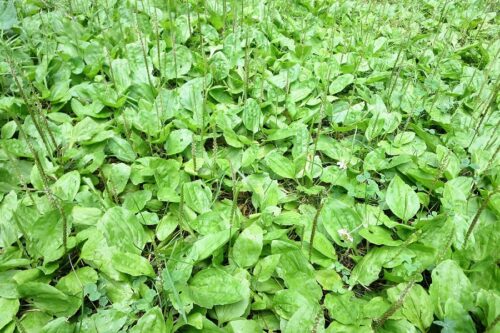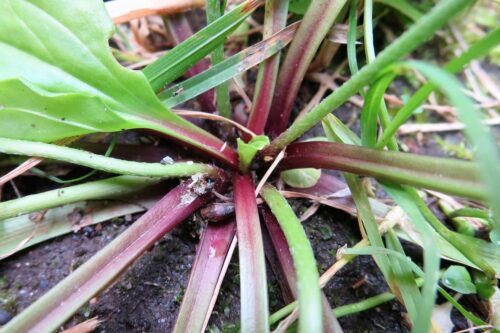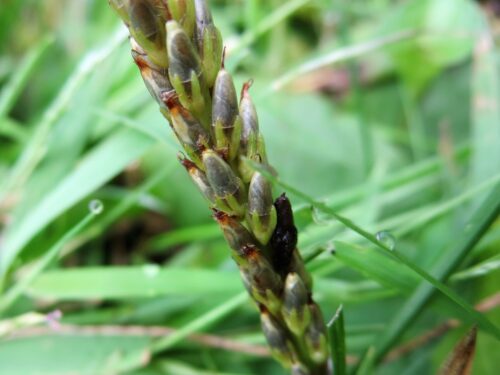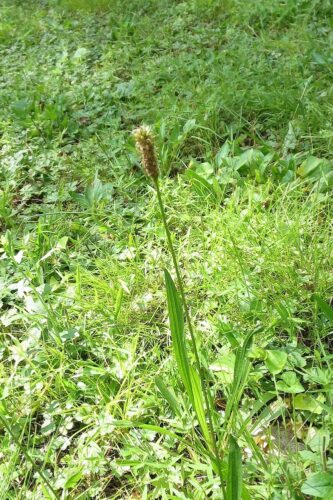I don’t now about you, but when I see the word “plantain” I think of that banana lookalike that’s sometimes sold in grocery stores. But, there are plants growing right outside that also go by the name “plantain.” Though the name is shared, the two types of plant are unrelated and even pronounced differently. It’s “plan-TAINS” for those starchy, tropical fruits and “PLANT-ins” for our local plants.

When I was a child, my friends and I often made make-believe salads with this plant, but we wouldn’t have called it “plantain.” We had no name for it. As I have since learned, there are two plantains that have that same general appearance. One is broadleaf plantain (Plantago major), also known as common plantain, which is native to Eurasia. The other is Rugel’s plantain (Plantago rugelii), which is native to North America. Online sources say that the most noticeable difference between the two plantains is that Rugel’s plantain has a purplish tint at the base of the stems. Whichever one it was that grew in my parents’ yard, I only pretended to eat it, but if I had actually ingested any, it wouldn’t have done me any harm. Both of these plantains are said to be edible (raw when the leaves are young, cooked when they get bigger and tougher).

Rugel’s plantain is sometimes called “blackseed plantain.” I have noticed that the seedheads eventually turn black, so the name seems fitting. I can’t say, though, if that’s a feature which distinguishes it from common plantain. There is apparently a difference in seed shape between the two plantains, though. Rugel’s plantain seeds are said to be elongated while common plantain’s are more egg-shaped.

(Note: the plantains haven’t gone to seed yet this year; this picture is from a previous year.)
I hope that I haven’t worn out your patience for plantains, because there is a second type of plantain that also grows in the yard. Here is a picture of it.

This is Plantago lanceolata, known as English plantain, buckhorn plantain, ribwort, or ribgrass. Its leaves are thinner, more lanceolate, and don’t draw as much attention to themselves, but the tall flower spike prevents the plant from going unnoticed. (BTW, I had a moment of doubt when comparing the flower spikes of my plants against those in photos online, because they did not look the same, but this webpage helped to clear matters up.) This plantain is said to be similarly edible to its cousins, though possibly more bitter and fibrous. As a primarily wind-pollinated plant, English plantain is not a big draw for bees, but it is a food source for several insects, including certain butterflies and katydids.
All things considered, I think both plantains deserve a place in the yard. They are theoretically edible, and they are demonstrably wildlife-friendly. Today I saw just how much the local bees appreciate our Rugel’s plantain.

And, because I remember both of these plants from childhood, they are like old friends. They visit us only once per year, but I am always happy to see them, and I enjoy having them here.

Pingback: An Abundance of Wildflowers | Blue-Footed Musings